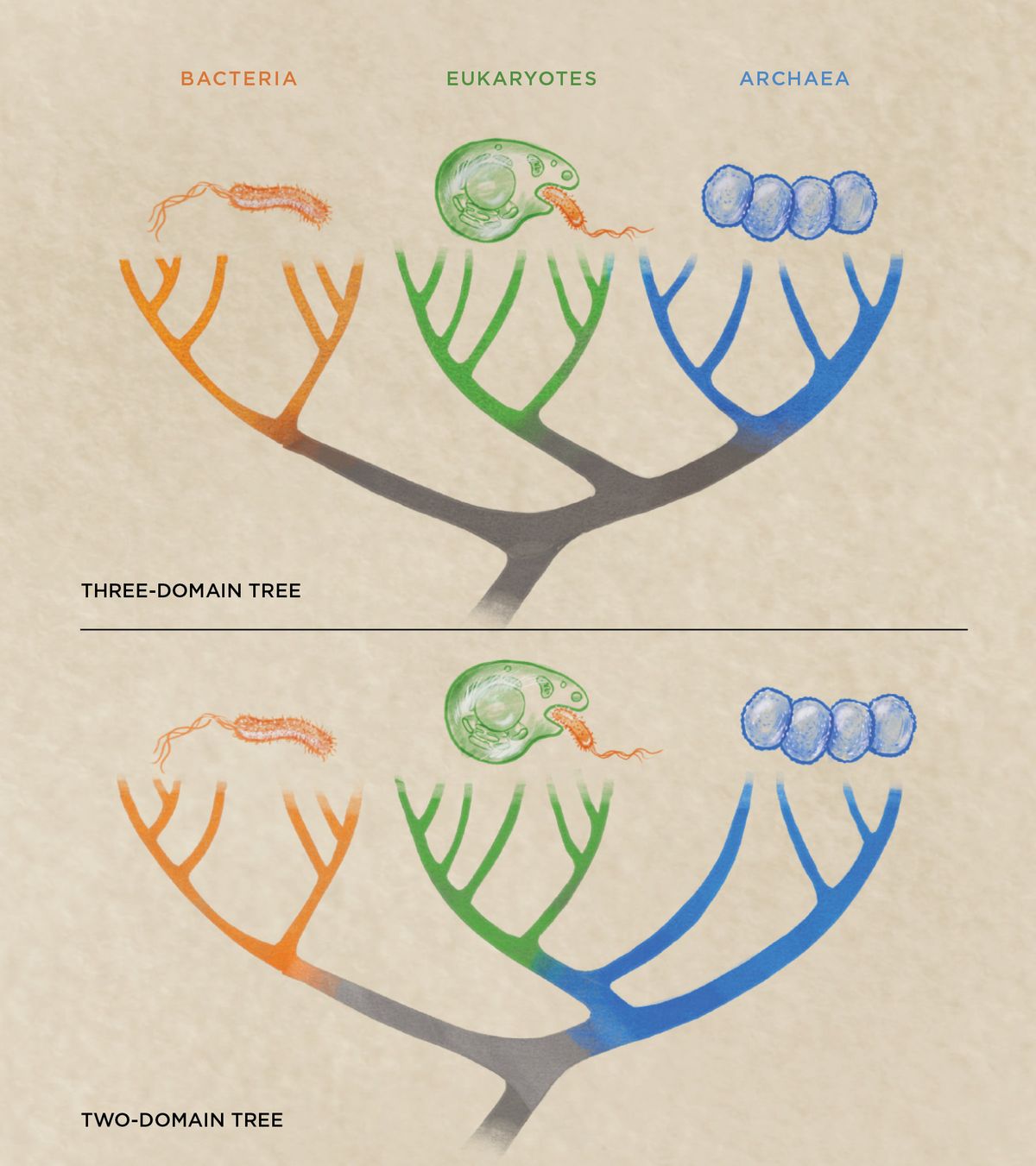ABOVE: © NICOLLE FULLER, SAYO STUDIO
Eukaryogenesis is broadly defined as the evolutionary path taken by increasingly complex lifeforms as they diverged from the simpler prokaryotes that dominated the early part of Earth’s biological history. The functional period of eukaryogenesis started just prior to the symbiosis between two prokaryotes and ended when the last common ancestor of modern eukaryotes arose. During this time, many of the most recognizable eukaryotic features appeared, including organelles such as mitochondria, nuclei, and chloroplasts, as well as cellular processes such as phagocytosis. The ordering of these events in time remains unclear.

ORIGINAL HOST UNKNOWN
While the identity of original host in the symbiotic partnership that birthed modern eukaryotic cells remains mysterious, some researchers say the evidence suggests it was an archaeon rather than a bacterium. Scientists call this host, which lived more than a billion years ago, the first eukaryotic common ancestor, or FECA.
ORIGIN OF MITOCHONDRIA
At some point in the past, the prokaryote host formed a partnership with an alphaproteobacterium and permanently engulfed it, creating the mitochondrion. Researchers debate whether phagocytosis was needed to establish this relationship, but mitochondria did help power much of eukaryotes’ subsequent radiation.
APPEARANCE OF UNIQUE FEATURES
Numerous other features and processes associated with modern eukaryotic cells evolved during this time, including the nucleus and cytoskeleton. The order of their appearance is uncertain.
BIRTH OF MODERN LIFE
The last eukaryotic ancestor (LECA) shared by all living eukaryotes today was already a complex cell by the time eukaryotes began to radiate. Over hundreds of millions of years, LECA gave rise to the complex organisms that exist today, including fungi, protists, plants, and animals.
From Three Domains to Two
The question of where exactly eukaryotes branch on the tree of life has been debated by scientists for decades. But the discovery of the Asgard archaea—the closest prokaryotic relatives to modern eukaryotes—has shifted most researchers away from a three-domain tree in which eukaryotes are a distinct lineage and toward a two-domain tree, in which eukaryotes emerged from within the archaea as a secondary domain.

Read the full story.










